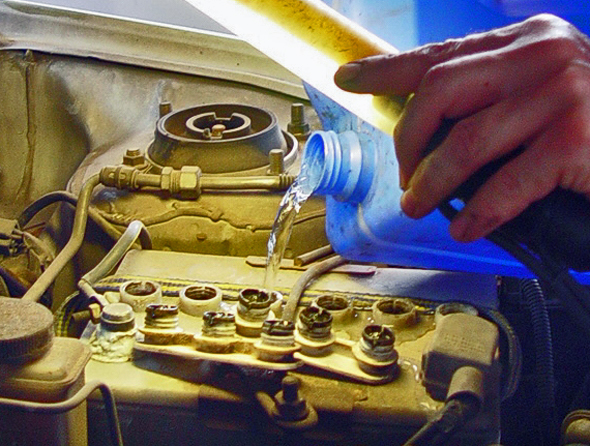
There are many little tips and tricks that you can use to not only keep your car in good running order, but also preserve the condition of its engine and battery for as long as possible.
Using distilled water instead of tap water in your car battery is one of those little tricks, that can actually prolong the life of the battery and keep you getting to where you need to go. While it’s an unavoidable reality that your car’s battery has a finite lifespan, you can prolong this lifespan by reading on to find out why and how distilled water is the first choice when it comes to your car’s battery.
Why can’t you use regular tap water in your car’s battery?
Tap water is full of minerals and other chemicals that can create serious problems in the long run for your car’s battery. This is because the foreign particles/minerals deteriorate the efficiency of the production of electricity in the battery. They produce what is know as an “Eddy Current”, as they build up in the battery and lower its efficiency by lowering its current capabilities.
Distilled water is free from the minerals and foreign particles that are found in regular tap water. This means that the distilled water is better for batteries as there is no build up in the cells that can compromise the current of the battery. A more illustrated means of explanation is as follows:
Assume that the current in your car’s battery runs from Positive+ to Negative-.
If one anode in the battery is Positive+, then it will read the foreign particles/minerals in the tap water as less Positive+, or even Negative-.
This means that the anode will send its current to the particles, instead of the correct Negative- anode.
By this explanation, you can see how using tap water decreases the efficiency of the current in your battery, meaning that you will not get the full power from your battery that you ought to, while its general state deteriorates over time too.
How to add distilled water to your car’s battery
It’s important that you begin any battery maintenance by checking the open-cell voltage. You can do this with a dedicated battery tester or a voltmeter. With the battery fully charge, and all electrical drains shut down (drains such as the dome light, warning buzzer, etc), the voltage should be between 12.5 and 12.6 Volts. You may see the voltage closer to 12.0 Volts in the event that the battery is not completely charged, but still able to turn over the motor.
If the voltage is lower than this, or a charge can’t be taken at all, then it’s time to get out the hydrometer – a device that checks the proportions of sulphuric acid and water in the electrolyte. If you can, pull up the battery fill caps and add distilled water to any of the cells in which the level isn’t touching the bottom of the fill port. As we’ve mentioned before, it’s best to use distilled water for car batteries, as tap water will eventually reduce the batter’s capacity.
Your car’s battery may be one of the “low maintenance” varieties that claim never to need water added. While they do have slightly different chemistry that means that consume less water, these batteries can eventually run out of water and die. If you can, look carefully and see if there is a way to pull up the filter caps. This may indeed not be possible however, since some are permanently sealed shut.
As the largest supplier of distilled water in the UK, The Distilled Water Company offers distilled water products ranging from five litres through to 1000 litre IBCs, for business and domestic customers around the country.
Unit B, 2 Endeavour Way London, LO, SW19 8UH United Kingdom
contact@thedistilledwatercompany.com • 0845 500 5440



